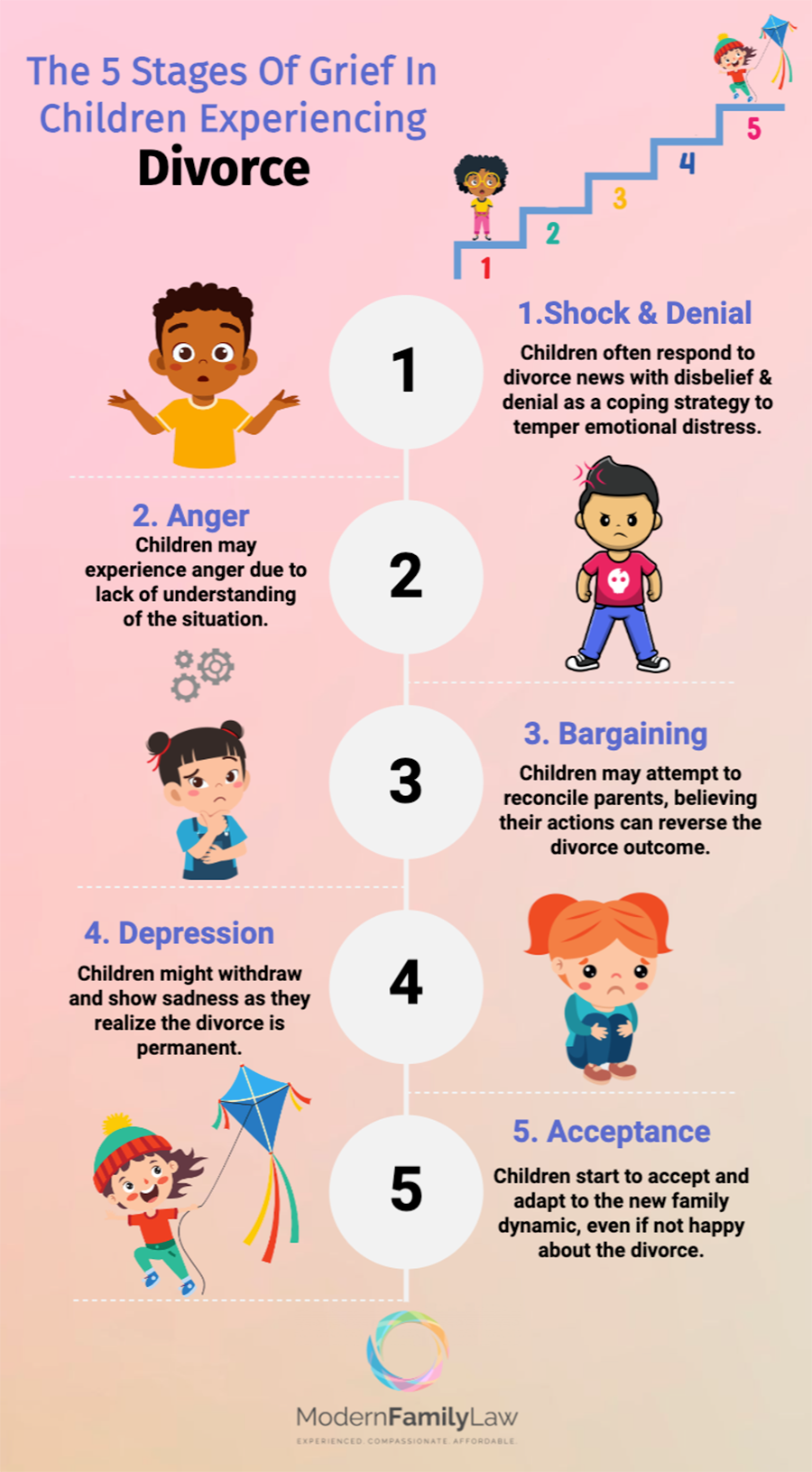Supporting Children Through The Stages Of Divorce
Divorce is not just a transition for parents but a profound change in a child’s world. As a parent navigating the process of divorce, your role in supporting your children is crucial. Here’s how you can help your children adapt and thrive during this challenging time:
Effective Communication & Emotional Support
» Open Dialogue: Foster an environment where kids can freely express their feelings about the divorce without fear of judgment.
» Consistency: Maintain regular routines to provide stability.
» School Collaboration: Keep educators in the loop to watch for behavioral changes.
» Quality Time: Spend more time with children showing signs of withdrawal or depression, and seek professional help if necessary.
Parental Conduct and Cooperation
» Stable Atmosphere: Stay calm and reassure children that they are not at fault for the divorce.
» United Parenting: Coordinate with your ex-spouse to present consistent discipline and rules.
» Expressiveness: Encourage activities that allow for emotional expression.
Long-Term Adjustment and Well-being
» Ongoing Support: Be prepared for long-term emotional impacts and keep conversations about the divorce open as children grow.
» Conflict Shielding: Protect kids from parental conflicts and avoid using them as messengers.
» New Dynamics: Be patient with adjustments to new family structures, such as stepfamilies.
Support Networks and Self-Care
» Group Programs: Utilize support groups for kids to connect with peers in similar situations.
» Parental Self-Care: Engage in self-care to ensure you can fully support your children.
» New Traditions: Create new family traditions to build positive memories.
By following these guidelines, you can help your children navigate through the divorce with resilience and emotional intelligence. Your support and understanding during this period can significantly influence their ability to process the changes and emerge stronger.






